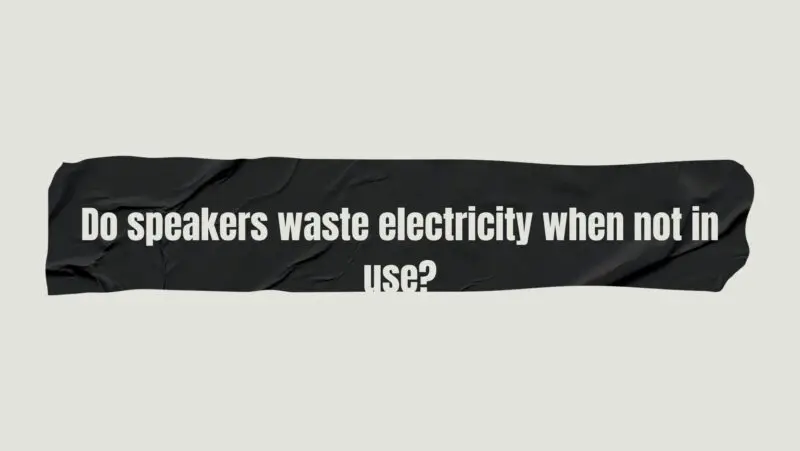In a world increasingly conscious of energy consumption and environmental impact, the question of whether speakers waste electricity when not in use is a pertinent one. Speakers, whether standalone or part of a larger audio system, are integral components of entertainment and information dissemination. However, concerns arise regarding their passive consumption of electricity when idle. In this comprehensive article, we delve into the intricacies of speaker power consumption during standby mode, explore the factors influencing their energy usage, and provide insights into how users can make informed choices to minimize wastage while still enjoying optimal audio experiences.
Understanding Standby Mode and Speaker Power Consumption
Speakers, like many electronic devices, can often enter a standby or idle mode when not actively in use. During this state, speakers remain powered on to enable quick activation when needed. However, this standby mode typically consumes less power than full operation. The energy usage during standby mode varies depending on the speaker’s design, features, and the technology incorporated.
Factors Influencing Speaker Energy Consumption
- Amplifier Type: Active speakers (those with built-in amplifiers) tend to consume more power during standby compared to passive speakers. Active speakers require constant power for their internal components to remain ready for operation.
- Efficiency: Energy-efficient designs and components contribute to lower standby power consumption. Manufacturers striving for reduced environmental impact often incorporate such features.
- Features and Connectivity: Speakers with advanced features like Bluetooth connectivity, voice assistants, and network connectivity might consume more standby power to remain ready to receive signals.
- Standby Modes: Some speakers offer multiple standby modes, with varying levels of power consumption. Some modes might reduce power significantly while others might only slightly lower consumption.
Measuring Speaker Standby Power Consumption
Measuring the exact power consumption of speakers in standby mode can be complex due to variations in design and the lack of standardized testing methods. Manufacturers’ specifications might offer an indicative value, but real-world results can differ based on usage patterns, environment, and technology.
Environmental Impact and Energy Efficiency
- Energy Consumption: While standby power consumption might seem minimal for an individual speaker, it can accumulate across households and commercial spaces, contributing to overall energy consumption.
- Energy Efficiency Standards: Some regions have introduced energy efficiency standards for electronic devices, including standby power limits for speakers. Compliance with these standards can encourage manufacturers to design more energy-efficient products.
Mitigating Standby Power Consumption
- Unplugging: The most effective way to prevent standby power consumption is to physically unplug the speaker when not in use. However, this might not be practical for users seeking quick access to their devices.
- Power Strips: Using power strips with on/off switches can allow users to disconnect multiple devices, including speakers, with a single switch.
- Timer Outlets: Timer-equipped outlets can automatically cut power to speakers during specific hours, ensuring they are off during periods of inactivity.
- Device Settings: Some speakers offer settings to adjust standby modes or disable certain features that contribute to power consumption.
Balancing Convenience and Energy Conservation
- Quick Activation: The convenience of having speakers ready to use instantly can influence users to leave them in standby mode. This balance between quick access and energy conservation varies based on individual preferences.
- User Awareness: Raising awareness about the energy implications of standby mode can encourage users to make conscious decisions about when to leave speakers powered on.
Conclusion
The question of whether speakers waste electricity when not in use highlights the intersection of technological convenience and energy conservation. While speakers in standby mode do consume power, their impact can be mitigated through energy-efficient designs, user awareness, and smart usage practices. As technology evolves, manufacturers are increasingly focusing on creating energy-efficient products that balance user needs with environmental responsibility. By understanding the factors influencing speaker power consumption, users can make informed decisions to strike a balance between enjoying high-quality audio experiences and minimizing wastage of electricity.


